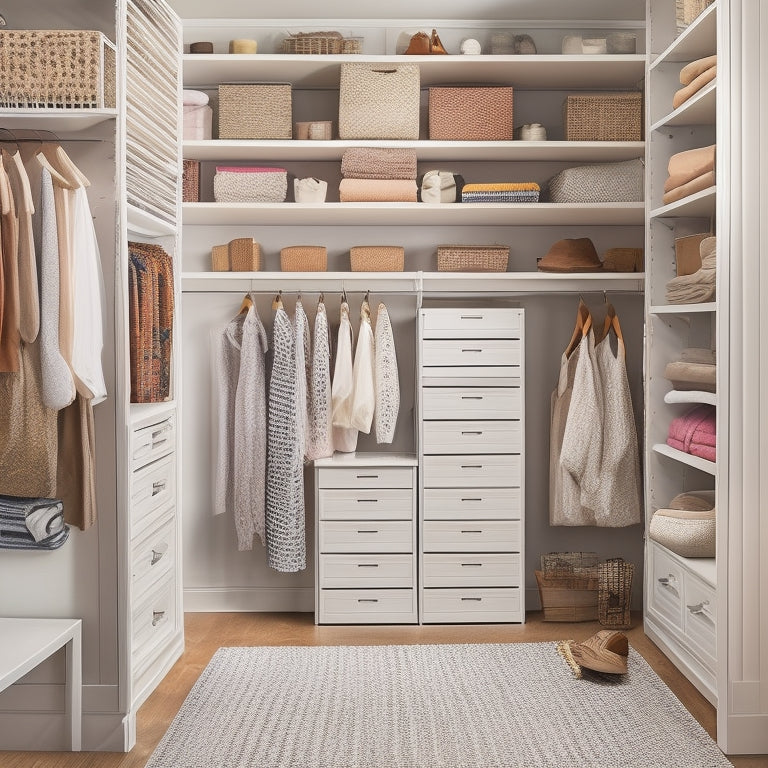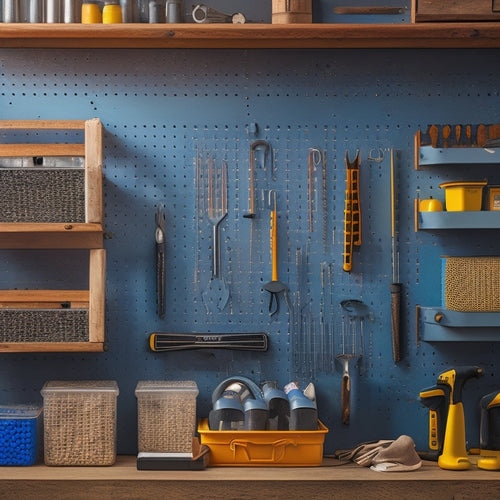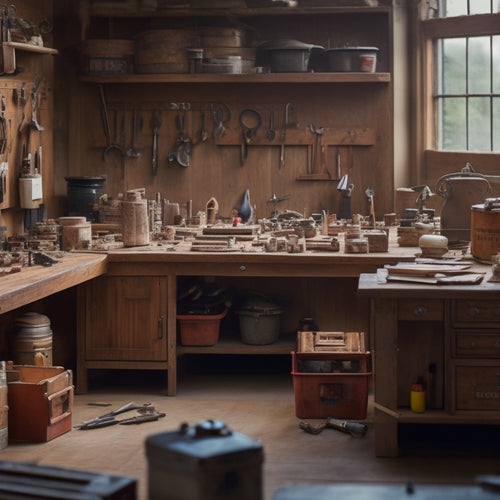
Mastering Storage Organization in 5 Steps
Share
By following five key steps, you'll be well on your way to becoming proficient in storage organization and converting your cluttered spaces into functional havens. First, assess your storage needs by taking inventory and evaluating your space. Next, declutter and purge items you no longer need or use. Then, assign a home for everything, using zones and labels to keep items organized. After that, employ storage containers effectively, choosing the right types and implementing a consistent labeling system. Finally, maintain your organized space with regular tidying and seasonal reviews, and get ready to reveal the secrets to a more streamlined and stress-free you!
Key Takeaways
- Create a comprehensive storage inventory to identify items and space requirements, and develop an effective organization strategy.
- Declutter and purge items by sorting them into keep, donate/sell, and discard categories, and adopt a ruthless approach to eliminate unnecessary items.
- Assign a home for everything by designating specific zones for categories of items, labeling containers, and implementing a logical labeling system.
- Utilize storage containers effectively by choosing the right type, labeling them clearly, and implementing color-coding for categorization.
- Maintain the organized space by allocating time for tidying up, scheduling seasonal reviews, and enforcing a "one in, one out" policy to prevent clutter.
Assessing Your Storage Needs
Since you're about to commence a storage organization project, it's essential to start by evaluating your storage needs. This involves taking stock of your belongings and determining how much storage space you require.
Begin by creating a storage inventory, an exhaustive list of all the items you need to store. This will help you identify what you have, how much space each item occupies, and what type of storage solutions you need.
Next, conduct a space evaluation to assess the available storage areas in your home or office. Measure the dimensions of each space, including shelves, closets, and cabinets.
Consider the accessibility and usability of each area, as well as any obstacles or challenges that may impact your storage plan. By combining your storage inventory with your space evaluation, you'll gain a clear understanding of your storage needs and be able to develop an effective organization strategy.
This will guarantee that you make the most of your available space and create a safe and efficient storage system.
Decluttering and Purging Items
Now that you've assessed your storage needs, it's time to tackle the items that are taking up precious space. This step can be challenging, but it's vital to adopt a minimalist mindset and let go of items that no longer serve a purpose.
Start by gathering boxes or bags and sorting items into three categories: keep, donate/sell, and discard. Be honest with yourself about each item - when was the last time you used it, and do you still have a functional need for it?
Emotional attachment can make it difficult to part with certain items, but remember that holding onto clutter can create a hazardous and stressful environment. Consider taking photos of sentimental items before letting them go, so you can still cherish the memory without the physical clutter.
Be ruthless - if you haven't used it in the past year, it's likely you won't miss it. By decluttering and purging items, you'll create space for the things that truly matter and make your storage organization process much more efficient.
Assigning a Home for Everything
Every item in your newly decluttered space needs a designated spot, making it easy to find and access what you need when you need it. This is where assigning a home for everything comes in.
By giving each item a designated zone, you'll avoid clutter building up again and guarantee your space remains organized and safe.
To achieve this, focus on creating a logical labeling system that makes sense to you. This can include:
- Designating specific zones for categories of items, such as a "crafting zone" or "office supplies zone"
- Assigning a specific shelf or bin for frequently used items, like kitchen utensils or cleaning supplies
- Creating a "launching pad" near the entrance for keys, wallets, and other essentials
- Establishing a "Landing Strip" for mail, bills, and other paperwork
Utilizing Storage Containers Effectively
With your newly assigned homes for every item, it's time to focus on the containers that will hold them. You'll need to choose the right container types for each space and item. Consider using stackable plastic bins for bulky items, hanging organizers for clothes, and small baskets for desk supplies.
Don't forget to think about the size, material, and durability of the containers.
Next, create a labeling system that makes sense for you. Use labels or stickers to identify what's inside each container. This will save you time and frustration when searching for specific items. You can also color-code labels to categorize similar items or assign a specific color to each family member.
Remember to keep your labeling system consistent throughout your storage spaces. This will help you maintain order and make it easier to find what you need.
Maintaining Your Organized Space
As you've successfully organized your space, the next challenge arises: maintaining this newfound order.
It's crucial to establish habits that guarantee your space remains organized and clutter-free. Regular maintenance is key to preventing clutter buildup and guaranteeing your space remains safe and functional.
To maintain your organized space, follow these tips:
- Set aside time each week for tidying up and putting away items that are out of place.
- Schedule seasonal reviews to assess what's working and what areas need improvement.
- Implement a "one in, one out" policy to prevent clutter from accumulating.
- Keep frequently used items easily accessible to avoid cluttering up your space.
Frequently Asked Questions
How Do I Handle Sentimental Items I Don't Want to Part With?
You're torn between keeping sentimental items and decluttering your space. Try memory preservation techniques, like taking photos or creating a digital album, to preserve the memories without the physical clutter, then consider letting go of items that no longer serve you.
Can I Use Storage Solutions for Items That Are Still Useful?
You're not alone in struggling to let go of useful items! Coincidentally, practical storage solutions can be your savior. Implement decluttering strategies that prioritize functionality, and you'll find a sense of relief, freeing up space while keeping your treasured items within reach.
What if I Have Limited Space for Storage Containers?
If you're struggling with limited space for storage containers, you're not alone! You can maximize your space by using vertical storage options and multi-purpose containers that serve more than one function, keeping your belongings organized and safe.
How Often Should I Reassess My Storage Organization System?
You regularly evaluate your space, habits, and needs, so you should reassess your storage organization system at similar intervals, like every 3-6 months, to maintain ideal storage frequency and guarantee your organization evaluation stays on track.
Can I Involve My Family in the Organization Process?
You can definitely involve your family in the organization process, encouraging teamwork and assigning organization roles to each member, making it a fun, collaborative effort that promotes a sense of responsibility and ownership.
Conclusion
As you stand in your newly organized space, imagine a sense of calm washing over you like a gentle breeze on a summer day. Your belongings, once scattered and chaotic, now have a designated home, waiting to be used and enjoyed. With every item in its assigned place, you feel a weight lifted, like a burden shed from your shoulders. Your organized space is a reflection of your newfound control and clarity, a sanctuary where you can breathe easy and focus on what truly matters.
Related Posts
-

What to Look for in a Pegboard Tool Storage Kit
When shopping for a pegboard tool storage kit, you need a system that combines customized organization, sturdy durabi...
-

Top 5 Small Tool Organizers for Your Workshop
You're looking to optimize your workshop's efficiency with high-quality small tool organizers. Compact storage soluti...
-

Top 7 Parts Tray Organizers for Productivity
You can optimize your workspace and enhance productivity with the right parts tray organizer, which can help you cate...


